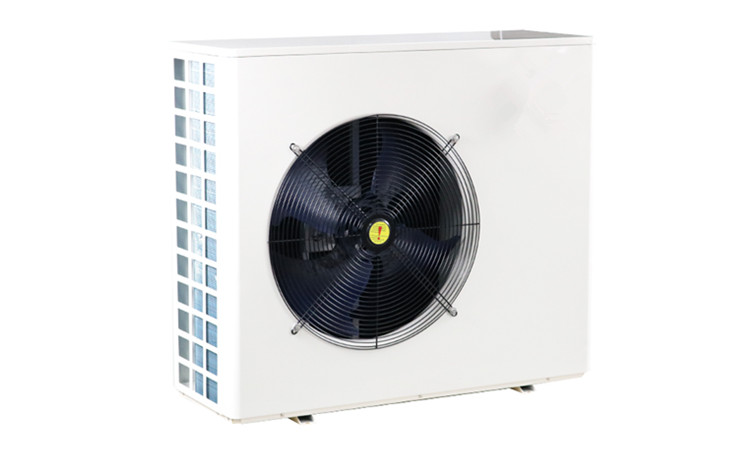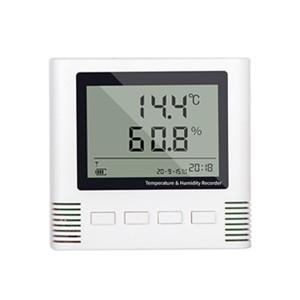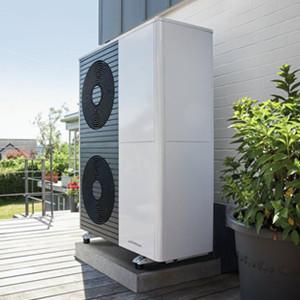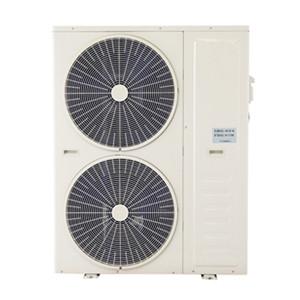Air Source Heat Pump Best COP
What are SPF and COP?
Historically, air source heat pumps have been the most widely used due to their relatively low cost, ease of maintenance, low installation costs, and award eligibility. However, they are also susceptible to limitations, depending on how they operate.
To heat the interior spaces of a home, an air source heat pump takes outside air and moves it inside the building. This limits their performance somewhat when the outside temperature drops below freezing.
To evaluate the performance of air source heat pumps, there are several metrics that provide information on thermal efficiency and dependence on seasonal temperature fluctuations. In a sense, the SPF and COP parameters will help you understand the limitations of air source heat pumps and adjust your preferences to your specific needs.
The coefficient of performance, COP, is the ratio of heat or cooling produced by a heat pump to a specific energy input. The ideal cop for a heat pump system starts at 2.0. This is for air source heat pumps, while geothermal starts at 3.1. Nevertheless, the cop of the heat pump can still be higher than 4.0. In the following guide, we will discuss the ideal COP and practical implications of the COP for different heat pump units.
What is the ideal COP for an air-to-water heat pump?
If you are using a closed loop heat pump, a good COP will be between 3.5 and 4.2. On the other hand, the maximum COP should be 4.7+.
For open loop, the idea COP is between 4.0-4.5 and the maximum is 5.0+. Finally, the direct exchange heat pump has a good COP of 4.1 and a max of 0f 5.0+
COP should not be mistaken for the efficiency rating of an air to water heat pump. Air-to-water heat pumps have a SEER/cooling rating of 13 in the North and 14 in the South. They have a minimum HSPF/heat rating of 8.5.
Additionally, geothermal heat pumps classify air versus water based on circulation and water versus water. You can also check their efficiency on the Energy.gov page. Also, the most efficient numbers are always marked with a + sign, as efficiency increases every year.

Understanding Coefficient of Performance
As mentioned earlier, the coefficient of performance is a performance rating. It shows how the air-to-water heat pump transfers heat or cold versus the actual electrical energy used. Remember that an air-to-water heat pump transfers heat from a low temperature area to a high temperature area.
This violates the laws of thermodynamics. Heat should flow from hot areas to cold areas. In this regard, the "uphill" heat transfer of the inverse heat law requires work. Therefore, COP shows the working efficiency of an air-to-water heat pump. It describes the amount of power required by a device to move a fixed amount of heat at a fixed temperature.
If you're looking for how much heat your HP transfers when powered at a specific energy, then COP is what you're looking for. For example, air delivered to a water heat pump with a COP of 2.5 will move 2.5 times the thermal energy of the eth energy it uses.
So how do you determine the COP of an air to water heat pump?
Simply put, you can tell your unit COP by using the equation COP equals the quotient of energy output and energy input. The unit of measure for moving heat is BTU, or British Thermal Units per hour. On the other hand, energy is measured in watts. 1BTU is equal to 0.293 watts.
For example, the energy output of an air-to-water heat pump is about 60,000BTU. It also runs on 42,000 watts. To get the unit COP, multiply the BTU by the watt (60,000 X 0.293. This should give you 17,580.). So when moving air from indoors to outdoors, the energy produced is 17,580 watts and vice versa. Then divide the output wattage by the input wattage 17,580/4,200. This gives you 4.18 COP.
Ways to Improve HP COP
The COP of an air-to-water heat pump can be improved by reducing the temperature difference between the cold and the hot during the operation of the unit. Since the air to water heat pump is a two-way cycle heating or cooling, you must lower the output temperature. The new reading should be 30 °C. You must use oversized canals, plumbing floors, walls or ceilings to reduce noise. On the other hand, the input temperature should be increased. You should use groundwater instead of air on this front.
The heat pump can be improved if the size of the internal heat exchanger is increased. Therefore, this increases the efficiency in line with the energy used by the compressor, as it reduces the internal temperature difference between the unit and the compressor.
The COP of an absorption chiller can be increased by using a second or third stage. Compared to single-effect coolers, double- and triple-effect coolers are extremely efficient, with a COP of over 1. They require high-pressure, superheated steam, but still only £10 per tonne of steam cooled every 60 minutes.
Factors Affecting Coefficient Performance
Air-to-water heat pumps absorb heat during the summer and discharge it to the soil or water. In outside air, the air source does the same thing. Air-to-water heat pumps extract and release heat easily. This is due to higher ground temperatures in winter and cooler summers.
Nonetheless, some factors may hinder its performance, such as:
Types of air-water circuits
The largest COPs are usually associated with open-loop heat pumps. On the other hand, a closed loop will have a relatively fair COP, but not as much as an open loop.
Purpose
Like many geothermal heat pumps, they work best in cooling mode rather than heating mode.
Does it run on a high stage or a low stage?
Geothermal heat pumps have two compressor functions. Less energy is consumed when only used in lower stages. Therefore, the COP of the heat pump becomes high at low stages.
Outdoor temperature
The temperature outside has a big effect. For example, if a heat pump regulates the air in your home and the outside temperatures are 80 and 70 degrees Fahrenheit, the gap inside is 10 degrees. Cooling at 80F is very simple. However, if the outside temperature reaches 110 F, the heat pump has to be further stressed and use more energy, reducing the COP.
Summarize
In retrospect, a good COP for an air to water heat pump should be above 4.0. However, there are other factors at play. What type of air to water heat pump is yours? Are you running it in cooling mode or heating mode? Are you using higher or lower tier? Generally speaking, a heat pump can run at a COP of 4.7+, provided it is operating optimally.





